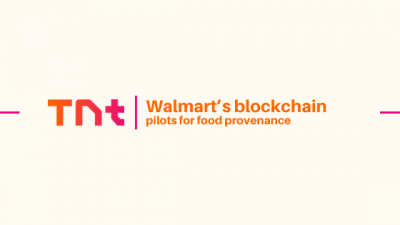Before Spotify Canvas loops and LED-synced festival walls, there was the humble music visualizer—pulsing, twirling, and grooving to the beat in someone’s dorm room on Windows Media Player 9. What started as an aesthetic sideshow to your favorite tunes has evolved into a digital artform that enhances music experiences, builds artist brands, and even sparks viral social content. Now, with accessible tech and advanced platforms, music visualizers have gone from novelty to necessity for artists and marketers alike.
Whether you’re making lo-fi beats for sleepy YouTubers or dropping synth-heavy bangers for gaming montages, a good visualizer can elevate your track from “cool” to “can’t-stop-watching.” But where did this visual wizardry come from, and why has it become such a creative cornerstone in music’s digital era?
Let’s rewind the tape—just don’t use your finger to fix it. This isn’t 1994.
A (Brief, Glorious) History of Music Visualizers
The earliest music visualizers weren’t built for streaming or social media—they were passion projects and experimental add-ons. Back in the late ‘90s and early 2000s, media players like Winamp and iTunes introduced visualizers that responded in real time to frequencies, volume, and rhythm.
Did they look like alien laser shows projected through a kaleidoscope? Absolutely. But that was part of the charm. These early iterations gave users their first taste of audio-reactive visuals—an idea that sound could not only be heard, but seen.
By the mid-2000s, software like MilkDrop and AVS gave creators more customization tools, but the visualizers mostly stayed stuck inside personal music libraries. It wasn’t until the YouTube era that visualizers started to go public.
Fast forward to today, and visualizers are everywhere—from Spotify and SoundCloud uploads to digital billboards. What changed? The tech, the demand, and the role of design in music storytelling.

Why Visualizers Took Off (And Why They’re Still So Useful)
As music became more digital, listeners started expecting more than just… well, music. Visual content is now king (or queen), and audio alone often struggles to hold attention online. Enter the music visualizer: a cheap, cheerful, and scalable way to make your track watchable without hiring a film crew or learning Adobe Premiere overnight.
Visualizers let artists:
- Create a video for a track without needing a “real” music video budget
- Add visual storytelling or mood to instrumental or ambient tracks
- Increase engagement on platforms that reward video content (hello, Instagram Reels and YouTube Shorts)
- Hook listeners with something more captivating than a static album cover
- Create brand consistency through a recognizable visual style
It’s the perfect tool for indie musicians, lo-fi beatmakers, EDM artists, podcast creators, and even digital marketers working on product launches with a soundtrack.
And with platforms like Videobolt, Renderforest, and Specterr, you don’t need a visual effects degree to start making your track come alive.
Popular Use Cases for Music Visualizers
A music visualizer is surprisingly versatile. Here are some of the most common (and clever) ways artists and businesses are using them:
- YouTube Videos: A beat with a waveform. Simple, effective, and algorithm-friendly.
- Live Shows & Gigs: Audio-reactive visuals projected behind the artist to create an immersive experience.
- Social Media Clips: Snippets of songs synced to minimalist motion designs—perfect for TikTok and Instagram.
- Merch Integration: Some artists use their visualizer design as a theme for merch packaging or animated QR code posters.
- Spotify Canvas: Those looping videos you see behind a track in Spotify’s mobile app? Often created with visualizer tools.
- Gaming Music Channels: Tracks paired with cyberpunk-style waveforms or animated landscapes—massively popular in the gaming and chillhop space.
In essence, if your music touches an audience in the digital space, a visualizer can help wrap it in an attractive bow.
Making It Yours: Unleashing Unique Visualizer Designs
Let’s be honest—waveforms can get a bit… samey. If every artist’s visualizer looks like a slightly tweaked version of the last guy’s, it can become white noise (or more accurately, white motion).
So how do you make a visualizer feel like yours?
Start with the tone of your music. A distorted electric guitar-driven track probably doesn’t need floating pastel orbs. A minimalist piano composition won’t benefit from Tron-style laser beams. Match the aesthetic to the audio.
Think about brand colors, fonts, and motifs you already use. If your album cover uses a glitchy cyber aesthetic, mirror that in the motion graphics. If your vibe is vintage soul, go with retro film textures or vinyl-themed animations.
Also consider tempo and structure. Tools like Specterr or VSXu allow beat syncing, so motion isn’t just reactive—it’s rhythmic.
And don’t sleep on backgrounds. A simple animated sky or sci-fi cityscape behind the waveform can add narrative depth without cluttering the screen.
If you’re collaborating with a visual artist, give them samples of your music and some visual references. Let the track speak through the design. After all, your visualizer isn’t just dancing to your music—it’s translating it.
The Tech That Made It All Possible
So why now? Why are music visualizers popping off more in 2020s than they ever did back in the day?
Two words: accessibility and automation.
Modern visualizer platforms are browser-based, drag-and-drop, and loaded with templates. Tools like Renderforest, Videobolt, and Rotor let users pick a visual style, upload a track, tweak a few settings, and have a complete visualizer in minutes. No code. No rendering on a 1998 Dell for 6 hours.
Here’s what’s changed:
- GPU-accelerated rendering makes real-time visuals possible
- Template-based design means you don’t need to animate from scratch
- Audio analysis algorithms let software detect beats and adjust motion accordingly
- Export flexibility allows for social clips, full HD videos, or 4K stage displays
- AI-enhanced visuals are starting to pop up, with software generating animations that “feel” the music dynamically
It’s no longer just a niche skill—it’s a smart tactic that anyone from your bedroom producer to your favorite indie band can wield.
Visualizers Aren’t Just for Musicians Anymore
We’ve talked about artists, producers, and YouTubers—but music visualizers are also being picked up by brands, podcasters, educators, and even mindfulness creators.
Marketers are using waveforms and ambient motion to give product demos some extra flair. Guided meditation channels layer soft animations under relaxing music and affirmations. Educational platforms use subtle visual motion to break up otherwise static audio content.
Visualizers are being used in:
- Product ads
- Online courses
- Branded background music on websites
- Fitness playlists
- Virtual event backdrops
The visualizer has evolved from “just something to look at” into a multi-purpose tool for storytelling, branding, and engagement.
Wrapping It Up (Like a Warm Bassline)
Music visualizers have come a long way from the trippy lava-lamp graphics of your early computer lab days. Today, they’re a powerful bridge between audio and visual expression, a way to reach audiences who expect more than just something to listen to.
Whether you’re a musician hoping to build buzz, a creative trying to carve out a visual identity, or a business looking to tap into sonic branding, a music visualizer could be the missing puzzle piece in your content strategy.
You don’t have to know how to animate. You don’t have to remortgage your studio setup. You just need the right track, the right tool—and maybe a good Wi-Fi signal.
Because if your music moves people, your visuals should too.
Information contained on this page is provided by an independent third-party content provider. Binary News Network and this Site make no warranties or representations in connection therewith. If you are affiliated with this page and would like it removed please contact [email protected]



Comments